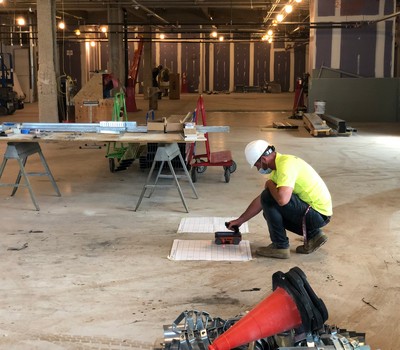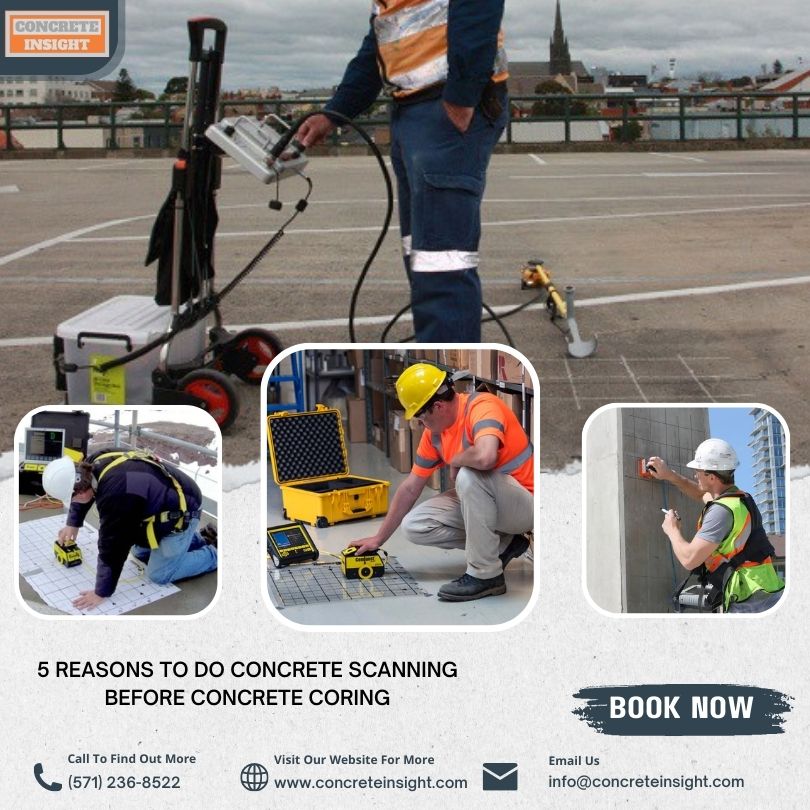Comprehensive Overview to Concrete Scanning Technologies
Comprehensive Overview to Concrete Scanning Technologies
Blog Article
Beyond the Surface Area: Leveraging Advanced Concrete Scanning Techniques for Unmatched Accuracy and Understanding
In the world of construction and facilities upkeep, the pursuit for precision and thoroughness is never-ending. Advanced concrete scanning techniques have arised as crucial tools in this pursuit, providing a glimpse under the surface to introduce a world of crucial insights. By using advanced modern technologies, experts can discover anomalies, evaluate the problem of concrete frameworks, and make notified choices that form the training course of tasks. The implications of these techniques extend much beyond mere surface-level analyses, guaranteeing a depth of accuracy and understanding that is unmatched.
Importance of Advanced Concrete Scanning
The importance of using advanced concrete scanning strategies lies in the unrivaled precision they offer for detecting sub-surface abnormalities and making sure structural honesty. By using innovative innovations such as ground-penetrating radar (GPR), electro-magnetic induction, and progressed finder imaging, building professionals can dig beneath the surface area of concrete structures with a degree of precision that much exceeds conventional examination approaches. Concrete Scanning. These methods enable the identification of concealed threats like rebar rust, spaces, channels, or post-tension cable televisions that could jeopardize the security and safety of a structure in time
In addition, progressed concrete scanning gives invaluable insights right into the total problem of a concrete element without the need for intrusive measures, lessening the risk of creating damage during the evaluation procedure. The capacity to pinpoint the exact place and deepness of potential problems permits targeted repair services and upkeep, eventually extending the life-span of the framework and maximizing its performance. Basically, the value of sophisticated concrete scanning can not be overstated in the realm of building and infrastructure maintenance, where accuracy and integrity are extremely important.
Kinds of Cutting-Edge Technologies

Abnormalities and Problem Detection

In enhancement to GPR, concrete scanning methods like thermography and impact-echo screening are additionally efficient in detecting abnormalities and problems. other By leveraging these innovative methods, professionals can proactively address structural concerns, ensuring the longevity and safety and security of concrete frameworks.
Assessing Concrete Condition
Exactly how can engineers accurately examine the condition of concrete structures to ensure their long life and safety and security? Evaluating the concrete problem is a vital element of preserving facilities integrity. Numerous advanced concrete scanning strategies are employed for this objective. Ground-penetrating radar (GPR) is frequently utilized to analyze the interior framework of concrete, detecting gaps, cracks, and other abnormalities that may compromise its strength. In addition, impact-echo testing can provide understandings right into the density and honesty of concrete components. Ultrasonic pulse rate screening is another important approach for examining concrete top quality by gauging the speed of acoustic waves via the material.
Additionally, visual assessment continues to be an essential component of concrete condition evaluation. Engineers aesthetically examine the surface for signs of damage, such as spalling, breaking, or discoloration. Combining non-destructive screening approaches with aesthetic inspections permits a thorough assessment of concrete problem, making it possible for designers to determine potential concerns beforehand and implement prompt maintenance or fixings. By leveraging these innovative strategies, designers can make sure the long-term resilience and security of concrete structures.
Enhancing Decision-Making Processes
In the realm of infrastructure monitoring, optimizing decision-making procedures is imperative for ensuring the reliable upkeep and longevity of concrete structures. Enhanced decision-making procedures in concrete monitoring involve using advanced scanning strategies to gather detailed information on the problem of frameworks. By leveraging innovations such as ground-penetrating radar and 3D imaging, stakeholders can make enlightened decisions regarding replacement, repair work, or reinforcement methods.
These advanced scanning strategies give important insights right into the interior structure of concrete, determining prospective problems such as spaces, fractures, or deterioration that might not show up externally. This degree of detailed info enables for aggressive upkeep planning, minimizing the danger of architectural failings and enhancing the general life expectancy of concrete structures.
Additionally, by incorporating digital why not look here documentation and analysis tools into the decision-making process, stakeholders can track the development of concrete problems with time, allowing predictive upkeep approaches and optimizing resource allotment. Ultimately, the integration of innovative concrete scanning techniques boosts decision-making procedures by supplying unmatched accuracy, understanding, and efficiency in facilities management.
Final Thought
Finally, advanced concrete scanning techniques supply unequaled accuracy and understanding in discovering anomalies, issues, and evaluating the problem of concrete frameworks. By leveraging advanced innovations, decision-making processes can be boosted, bring about more reliable and enlightened services for keeping and repairing concrete facilities. These techniques play an essential function in ensuring the security and long life of concrete frameworks, making them an indispensable device in the field of building and engineering.
Moreover, progressed concrete scanning offers indispensable insights right into the overall problem of a concrete aspect without the demand for intrusive measures, lessening the threat of causing damage during the analysis procedure - Concrete Scanning. One more innovative technology is 3D X-ray scanning, which offers comprehensive pictures of the inner framework of concrete, supplying beneficial details without the requirement for damaging testing. Furthermore, Concrete Cover Meters are made use of to determine the density of concrete cover over support bars accurately. Improved decision-making processes in concrete administration entail utilizing innovative scanning methods to gather comprehensive information on the problem of frameworks.In final thought, progressed concrete scanning strategies offer unequaled precision and insight in discovering abnormalities, problems, and evaluating the problem of concrete structures
Report this page